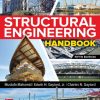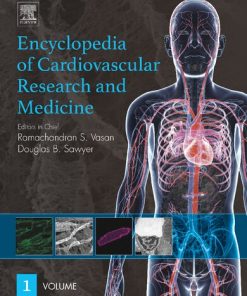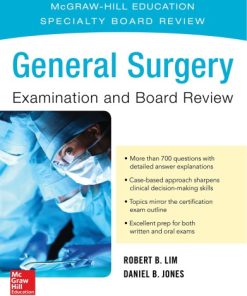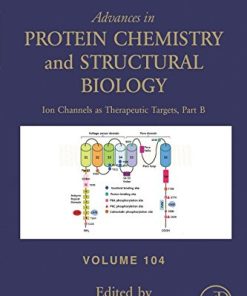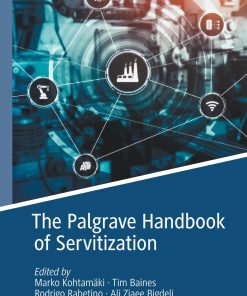(Ebook PDF) Biomechatronics 1st Edition Marko Popovic 0128130415 9780128130414 full chapters
$50.00 Original price was: $50.00.$25.00Current price is: $25.00.
Biomechatronics 1st Edition Marko B. Popovic – Ebook PDF Instant Download/DeliveryISBN: 0128130415, 9780128130414
Full download Biomechatronics 1st Edition after payment.
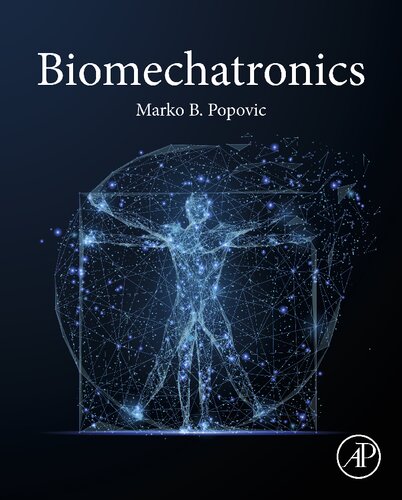
Product details:
ISBN-10 : 0128130415
ISBN-13 : 9780128130414
Author: Marko B. Popovic
Biomechatronics is rapidly becoming one of the most influential and innovative research directions defining the 21st century. Biomechatronics provides a complete and up-to-date account of this advanced subject at the university textbook level. Each chapter is co-authored by top experts led by Professor Marko B. Popovic, researcher and educator at the forefront of advancements in this fascinating field. Beginning with an introduction to biomechatronics and its historical background, this book delves into the most groundbreaking recent developments in a wide variety of subjects, such as artificial organs and tissues, prosthetic limbs, neural interfaces, orthotic systems, wearable systems for physical augmentation, physical therapy and rehabilitation, robotic surgery, natural and synthetic actuators, sensors, and control systems. A number of practice problems and solutions are provided at the end of the book. Two years in the making, the book Biomechatronics is a result of dedicated work of a team of close to thirty contributors from all across the globe including top researchers and educators from the USA (Popovic, Lamkin-Kennard, Sinyukov, Troy, Goodworth, Johnson, Kaipa, Onal, Bowers, Djuric, Fischer, Ji, Jovanovic, Luo, Padir, Tetreault), Japan (Tashiro, Iramina, Ohta, Terasawa), Sweden (Boyraz), Turkey (Arslan, Karabulut, Ortes), Germany (Beckerle, Willwacher), New Zealand (Liarokapis), and Switzerland (Dobrev).
Biomechatronics 1st Table of contents:
1: Introduction
Abstract
2: Kinematics and Dynamics
Abstract
2.1 Introduction
2.2 Kinematics
2.3 Dynamics
2.4 Propulsion in Fluids
3: Actuators
Abstract
3.1 Introduction
3.2 Synthetic Muscles
3.3 Electroactive Polymers
3.4 Shape-Memory Alloys and Shape-Memory Polymers
3.5 Variable Stiffness/Impedance Actuators
3.6 A Brief Review of Nonbiologically (or Less Biologically) Inspired Conventional Actuators
3.7 Biological Actuators: Muscles
A Appendix: Braided, Helically Wound Mesh for McKibben Like Artificial Muscle
4: Sensors: Natural and Synthetic Sensors
Abstract
4.1 Introduction
4.2 Natural Sensors
4.3 Sensory Receptors
4.4 Sensory Receptors Classified by Stimulus Type Detected
4.5 Sensory Receptors Classified by Stimulus Location
4.6 Synthetic Biological Sensors
4.7 Synthetic Sensors
4.8 Sensor Fusion and Integration
4.9 Integrated Systems for Obtaining Sensory Feedback
4.10 Conclusions and Future Perspective
5: Control and Physical Intelligence
Abstract
5.1 Introduction: General Control Problem Revised
5.2 PID Control Approach
5.3 Error and Time Delays in Time Domain
5.4 Stability
5.5 Feedback Linearization
5.6 Sliding Control
5.7 Adaptive Control
5.8 Linearity and Predictability; Multidimensionality and Associated Problems
5.9 Physical Intelligence
5.10 Control and Artificial Intelligence, Machine Learning, Data Mining
5.11 Biological Neural Networks
6: Direct Neural Interface
Abstract
6.1 Introduction
6.2 Theory of Electrical Recording
6.3 Electrical Stimulation
6.4 Optical Recording and Stimulation
6.5 Applications of BMI
7: Artificial Organs, Tissues, and Support Systems
Abstract
7.1 Introduction
7.2 Cardiovascular and Respiratory Devices
7.3 Metabolic and Digestive Devices
7.4 Sensory Devices
7.5 Orthopedic, Dentistry, Plastic, and Reconstructive Devices
7.6 Neuromodulation
8: Molecular and Cellular Level—Applications in Biotechnology and Medicine Addressing Molecular and Cellular Level
Abstract
8.1 Introduction and Overview
8.2 Scaling Laws
8.3 Physical Considerations at the Microscale
8.4 Physical Considerations at the Nanoscale
8.5 Approaches to Micro- and Nanoscale Propulsion
8.6 Applications of Micro- and Nanorobots at the Molecular and Cellular Levels
8.7 Future Perspective
9: Prosthetic Limbs
Abstract
9.1 Introduction
9.2 Prosthetic Biomechanics
9.3 Design Considerations
9.4 Upper-Limb Prostheses
9.5 Lower-Limb Prostheses
9.6 Future Directions
10: Powered Orthotics: Enabling Brace Technologies for Upper and Lower Limbs
Abstract
10.1 Introduction
10.2 Powered Hip Braces, Waist Assist, and Lumbar Support
10.3 Powered Knee Braces
10.4 Powered Ankle Brace
10.5 Powered Shoulder Brace
10.6 Powered Elbow and Wrist Brace
10.7 Powered Hand and Finger Braces, Robotic Gloves
11: Exoskeletons, Exomusculatures, Exosuits: Dynamic Modeling and Simulation
Abstract
11.1 Introduction to Wearable Exoskeletons, Exomusculatures, and Exosuits
11.2 Dynamic Modeling and Simulation of the Human Musculoskeletal System for Exoskeleton Designs
11.3 Computational Musculoskeletal Modeling and Simulation
12: Physical Therapy and Rehabilitation
Abstract
12.1 Introduction
12.2 Learning Objectives
12.3 Target Population, Design, and Treatment Strategies
12.4 Upper-Limb Therapy
12.5 Lower-Limb Therapy
12.6 Balance Therapy
12.7 Conclusion
13: Wheelchairs and Other Mobility Assistance
Abstract
13.1 Introduction
13.2 Manual Wheelchairs
13.3 Electric Wheelchairs
13.4 Wheelchairs With Low-Throughput HMIs
13.5 Stair-Climbing Wheelchairs
13.6 Assisted Walking
13.7 The Challenge of Innovation in (Semi-)Autonomous Wheelchair Design
14: Feeding Systems, Assistive Robotic Arms, Robotic Nurses, Robotic Massage
Abstract
14.1 Feeding and Hygiene Assistance, Vocational Aid
14.2 Robotic Nurses
14.3 Robotic Massage
15: Robotic Surgery
Abstract
15.1 Overview of Robotic Surgery
15.2 Platform-Based Classification of Robotic Surgery
15.3 Human-Machine Interaction in Robotic Surgery
15.4 Autonomy Levels in Robotic Surgery
15.5 Case Studies
15.6 Conclusion and Future Trends
16: Biomechanics and Biomechatronics in Sports, Exercise, and Entertainment
Abstract
16.1 Biomechanics Fundamentals
16.2 Modeling and Simulation: Simplified, Intermediate, and Detailed Models
16.3 Several Examples of Biomechatronics Systems for Exercise, Rehabilitation, Games, and Sports
16.4 Head Injury Biomechanical Modeling
16.5 Exercise Systems in Microgravity Conditions
17: Bioinspired Robotics
Abstract
17.1 Introduction: Bioinspiration
17.2 Bioinspired Locomotion
17.3 Bioinspired Manipulation
17.4 Bioinspired Soft-Robotic Systems
17.5 Algorithmic Bioinspiration
18: Biomechatronics: A New Dawn
Abstract
18.1 Introduction
18.2 New Sensors and Actuators
18.3 Brain Machine Interfaces
18.4 Control Strategies, AI, and Machine Learning
18.5 Bionic Tissue, Artificial Organs, and Implants
18.6 Prosthetic, Assistive, and Human Augmentation Devices
18.7 Biomechatronic Technologies for Animals
18.8 Other Human Oriented Applications
18.9 The Future of the Biomechatronics Age Human
19: Practice Problems
Abstract
20: Solutions and Hints for Selected Problems
People also search for Biomechatronics 1st:
stanford biomechatronics lab
introduction to biomechatronics
handbook of biomechatronics
nau biomechatronics lab
handbook of biomechatronics pdf
You may also like…
Business & Economics - Investing
Geopolitical Alpha: An Investment Framework for Predicting the Future 1st Edition
Religion & Spirituality - Religious Studies
John Locke’s Theology: An Ecumenical, Irenic, and Controversial Project Jonathan S. Marko
Medicine - Surgery
General Surgery Examination and Board Review 1st Edition by Robert Lim 0071839945 9780071839945
Medicine - Health-Related Professions
Biology and other natural sciences
Business & Economics - Management & Leadership
Politics & Philosophy - Government & Politics
The Economics Of Brexit: Revisited 1st Edition Edition Philip B. Whyman



